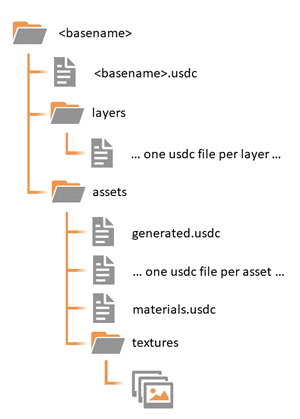The Universal Scene Description (USD) exporter exports large CityEngine scenes into a set of USD files with minimal loss of information, which makes it suitable as an interchange format for further processing in VFX pipelines. CityEngine layers, object boundaries, and asset instance information are preserved after export. Any PBR materials are exported to the USDPreviewSurface material, which guarantees correct shading in any compatible downstream application without additional material assignment work.
Use cases
- Focus on compatibility with tools such as SideFX Houdini and its Solaris component, The Foundry Katana, and corresponding USD-compatible renderers (for example, Pixar Renderman).
- Export of large models with complex rules while retaining shape granularity (no merging of geometry). This allows for edits (for example, move or scale) on individual objects (for example, buildings) in downstream tools without the need to export the whole scene again.
- Preservation of instances—for example, inserted assets not touched by CGA operations are exported as separate nodes. This allows for limited editing (translate or scale) of these assets in downstream tools.
- Support for PBR materials via the standard USDPreviewSurface material schema.
Export options
The USD exporter does not provide export options other than the general options for file naming, terrain handling, ignoring georeferencing, and so on. See General export options for more information.
Layout of exported USD files
For each export session, the USD exporter creates a set of directories and files:
|  |